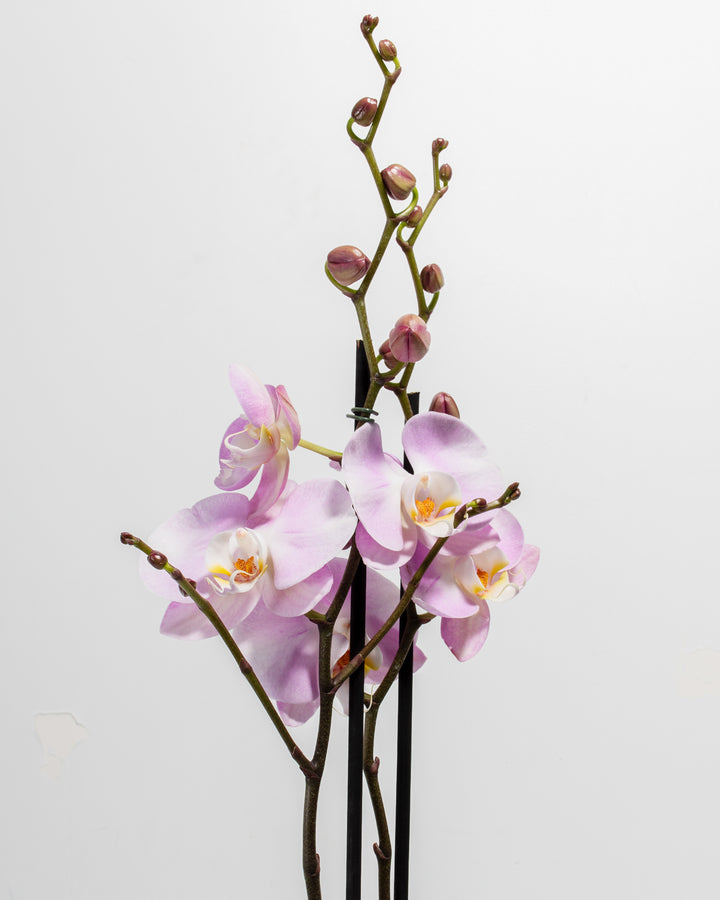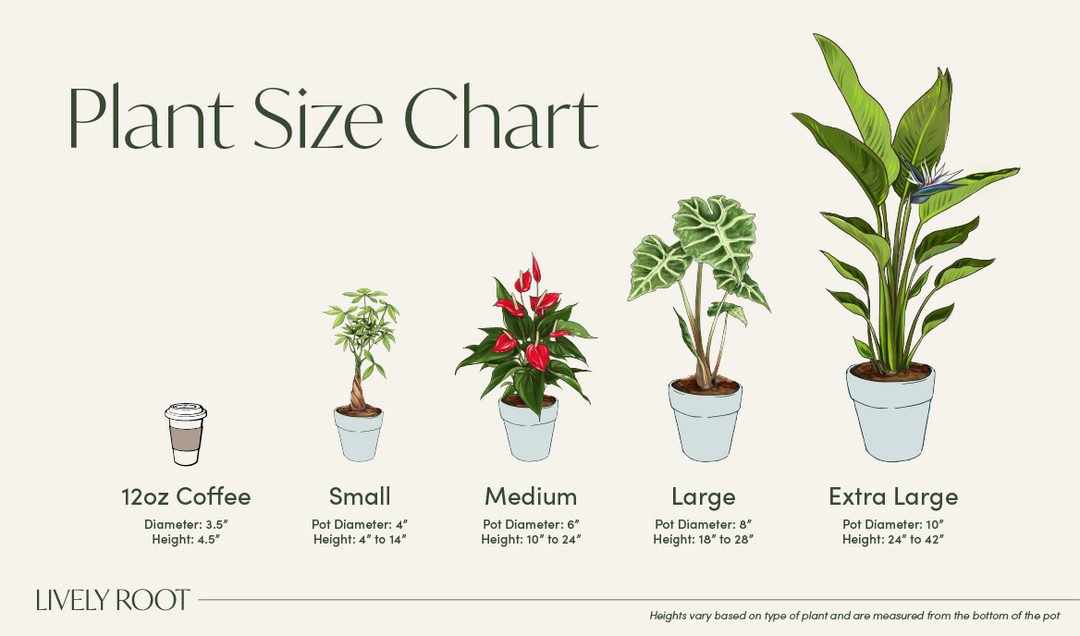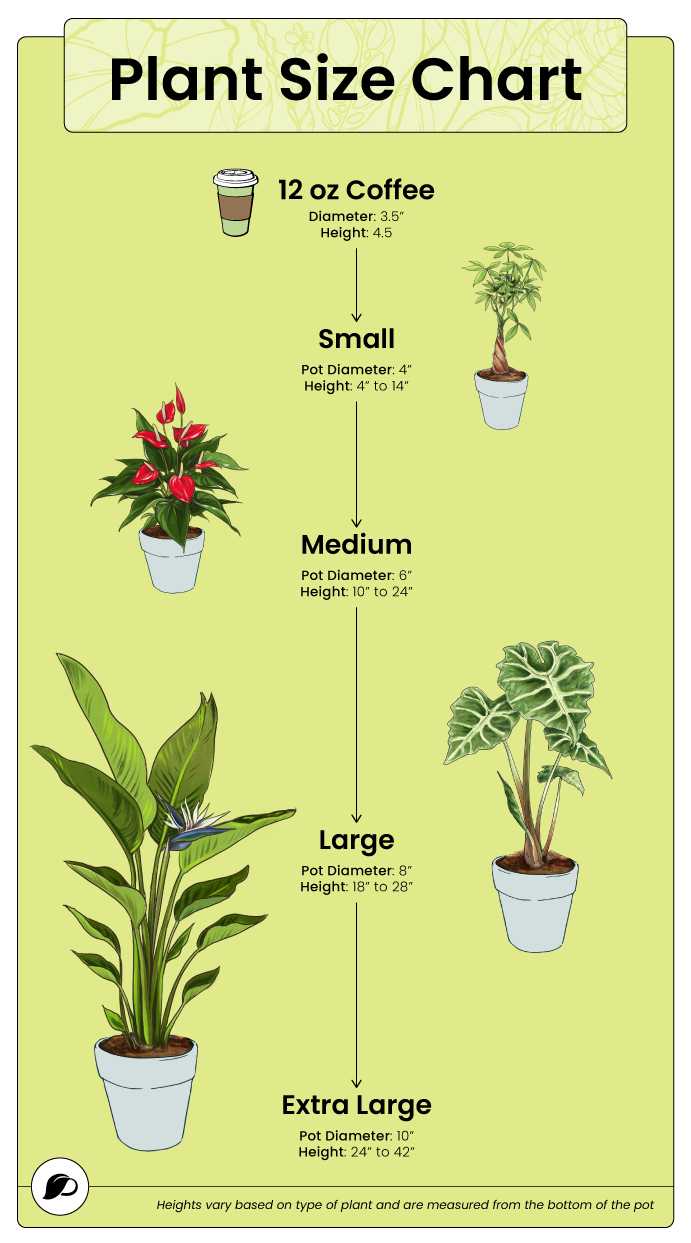Phalaenopsis orchids prefer bright, indirect light. Place them near a window where they can receive plenty of indirect sunlight throughout the day. Direct sunlight can burn their leaves, so it's best to filter the light or provide shade during the hottest parts of the day.
Pink Orchid Care & Buying Guide

Pink Phalaenopsis Orchid: Overview
The Pink Phalaenopsis Orchid (Phalaenopsis spp.), or Moth Orchid, is a popular flowering plant know for its elegant, long-lasting pink blooms that range from soft pastel to deep magenta. Native to Southeast Asia and Australia, it thrives in bright, indirect light, moderate watering, and high humidity (50% - 70%), making it well-suited for indoor and outdoor cultivation, especially in USDA zones 10-12. This orchid symbolizes grace, femininity, and admiration, making it a thoughtful plant gift for special occasions. Unlike many housplants, it is non-toxic to pets, ensuring a safe choice for cat and dog owners. You can explore other Orchid varieties, such as the Arcadia Moth Orchid, Miraflore Moth Orchid, Red Lip Moth Orchid, and White Moth Orchid.
Pink Moth Orchid: Care Guide
The Pink Moth Orchid is a low-maintenance yet stunning tropical plant, ideal for beginners and experienced growers alike. With proper care, including the right balance of light, water, and humidity, it will reward you with beautiful, long-lasting blooms.
Light and Temperature
This orchid thrives in bright, indirect light; place it near an east- or north-facing window. Avoid direct sun, as it can scorch the leaves. Ideal temperatures range between 60-85°F, with nighttime drops encouraging blooming. Keep it away from cold drafts and heat sources like radiators or vents.
Watering and Humidity
Water your Pink Moth Orchid weekly, allowing excess water to drain completely. Use room-temperature, filtered, or distilled water to prevent mineral buildup. It prefers high humidity (50-70%), so consider using a humidity tray, misting occasionally, or placing it in a naturally humid space like a bathroom.
Soil and Repotting
A well-draining orchid mix, typically made of bark, sphagnum moss, and perlite, is essential for healthy roots. Repot your orchid every 1-2 years, preferably after flowering, to refresh the growing medium and prevent root rot. Choose a clear pot with drainage holes to monitor root health.
Feeding and Propagation
Fertilize with a balanced orchid fertilizer (20-20-20) at half strength every 2-4 weeks during active growth. Reduce feeding in winter. Propagation is typically done through keikis (baby orchids) that sprout from the flower spike once they develop strong roots; they can be carefully separated and repotted.
Common Problems and Solutions
Yellowing leaves often indicate overwatering, while wrinkled leaves suggest underwatering or low humidity. If buds drop before blooming, it may be due to temperature fluctuations or insufficient light. Watch for pests like mealybugs and scale, treating infestations with insecticidal soap or neem oil.
Pink Orchid Flower: Placement, Companion & Alternative Plants
Orchids are pet-safe beauties with showy flowers that captivate any onlooker. But when blooms begin to fade, there’s no need to worry, our handy Orchid Subscription option. It ensures you’ll always have a fresh, flowering orchid in your home. You will receive a new orchid variety in a stylish Eco Pot every 3 or 6 months.
Best Locations & Uses
- The light Pink Orchid is an easy-care plant, ideal for novice plant enthusiasts.
- With its elegant blooms and symbolism of love and admiration, this romantic flower makes a perfect gift for Valentine’s Day.
- The Pink Orchid is pet-friendly and non-toxic to cats and dogs, making it a worry-free choice for pet owners.
- Place it in a living room, bedroom, or office for an instant touch of sophistication and to bring natural beauty to a space.
- The Orchid Bundle is perfect for orchid lovers and collectors as it offers a curated selection of multiple orchids, ideal for creating an elegant display or expanding your collection.
Companion Plants
Pairing your Pink Orchid flower with the right companion plants enhances its beauty while creating a thriving indoor environment.
- Boston Fern Plant (Nephrolepis exaltata): The Boston Fern is a lush, feathery plant that thrives in similar high-humidity conditions, making it a perfect underplanting for your orchid display.
- Calathea Setosa ‘Compact Star’ (Calathea setosa ‘Compact Star): Known for its elegant, silvery-striped foliage, the pet-friendly Calathea Setosa plant thrives in indirect light and the same humidity levels as pink orchids, adding a sophisticated touch.
- Variegated Spider Plant (Chlorophytum comosum): With its green-and-cream striped leaves, the low-maintenance Variegated Spider plant provides beautiful contrast while improving indoor air quality.
Alternative Plants
If you love the Pink Orchid but want to explore other stunning options, consider these beautiful alternatives.
- Purple Phalaenopsis Orchid (Phalaenopsis spp.): The Purple Phalaenopsis Orchid is a striking variety with rich purple blooms, offering the same easy care and long-lasting flowers as the pink version.
- Peace Lily Spathiphyllum (Spathiphyllum): The Peace Lily is a graceful, pet-friendly plant with elegant white blooms and air-purifying qualities, making it a great low-light alternative.
- Pink Calla Lily (Zantedeschia rehmannii): With its gorgeous pink blooms, the Pink Calla Lily adds an exotic touch and thrives in warm, humid conditions like orchid plants.
Order a Beautiful Pink Orchid From Lively Root Today
Ready to add a touch of elegance to your home? Buy your Pink Phalaenopsis Orchid from Lively Root and enjoy its stunning blooms all year round!
Customer Reviews
Follow us @livelyroot & show us your #livelyroot plants

